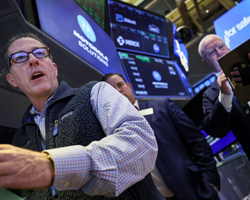What Should We Expect from the Dollar and the Fed in 2023? | Daily Market Analysis

Key events:
- USA - Christmas
- Canada - Christmas
- Switzerland - St. Stephen's Day
- UK - Boxing Day
- Australia - Boxing Day
- New Zealand - Boxing Day
The dollar experienced a long period of strength this year but reversed in the fall. While many events influenced this momentum, the Fed's activity and rhetoric were still the main theme. And now, as we move into the new year, it looks like this will continue to be a major factor in the future. And not just for the dollar, as risk sentiment could fluctuate considerably in the coming months.
There is still a divergence between what the market expects from the Fed and what the Fed says it is doing. Fed officials have repeatedly said that rate hikes will continue. But the market is estimating an ultimate rate of less than 5.0%. This means that the Fed will raise rates a maximum of two more hikes in the next year, which is much slower than what has happened so far.

The first quarter is the moment of truth to see if the Fed stays true to its claim that rates will be higher than the markets expect. The economic situation could change significantly in the coming months, which could change the Fed's stance. It's not that the market thinks the Fed is unfair, it's that the market thinks the Fed is too optimistic about the economy.
Everyone seems to agree that there will be some slowdown in U.S. growth early next year. The question is whether it will be severe enough to throw the Fed off its rate hike trajectory. Or will the slowdown in economic activity cause inflation to fall faster than expected? So far, core inflation has been below expectations by quite a bit over the past few months. But core inflation has been a bit more "viscous."

Slower economic activity means lower oil demand, and energy has been one of the leading factors in the difference between core and core CPI. A milder winter and easing geopolitical tensions may help inflation decline faster than expected. Combined with a lagging economy, there may be a good reason for the Fed not only to stop raising rates but also to backtrack. A less risky outlook and a dovish Fed attitude could weaken the dollar considerably over time.
Economists agree that there will be a relatively mild and short recession early in the year, followed by a slow recovery. This assumes that the Fed maintains tight rates and aggressively unwinds the balance sheet. This is a scenario that could lead to an initial weakening of the dollar, but overall it will remain strong throughout the year due to higher interest rates.
The divergent view is that there will be no recession at all, and the U.S. will survive due to good employment numbers and increased government spending. This means that inflation could stay high and the Fed might not raise rates as aggressively. This scenario implies that the dollar will weaken early in the year and just continue its trend.










